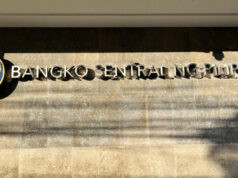Tree crops development in ASEAN
Permanent crops are mainly trees (e.g., coffee, cacao, rubber) but they also include palms (e.g., coconut, oil palm) and vines (e.g., pepper) (www.fao.org). They are planted and possess long economic life. By contrast, temporary or annual crops are sown and harvested during the same agricultural year. Examples are rice, corn, sweet potato, peanuts and vegetables.
How important are tree-crops in the ASEAN?
They mainly comprise rubber, oil palm, coffee, cacao and coconut. In this article, other permanent crops like pepper and cashew are also considered.
In the Philippines, tree-crops occupy more land than rice. Yet, they have been heavily neglected for decades or at the very least, suffered benign neglect. Yields are low. The annual crops focus has diverted urgent actions away from tree-crops.
Coconut alone occupies some 3.5 million hectares. They are mostly monocrop with low productivity. Adding coffee, rubber, cacao and oil palm will total at least four million hectares.
COCONUT
Over 30 years, Indonesia had the largest increase in area, followed by the Philippines. The other three ASEAN countries — Malaysia, Thailand and Vietnam — posted notable declines as they shifted to other crops.
COFFEE
While Indonesia almost doubled its large area, Vietnam posted an enormous increase (26 times). The Philippines and Malaysia recorded declines.
CACAO
Indonesia posted rapid increases (28 times) over the 30-year period. By contrast, Malaysia shifted from cacao to oil palm due to the high cost of labor.
RUBBER
Indonesia, Thailand and Vietnam recorded large-area expansions while Malaysia posted decline following its oil palm strategy. ASEAN is the global supplier of natural rubber. Overexpansion pulled down world prices.
The Philippines increased its area almost three times over 30 years, but paled in comparison with neighbors.
Oil palm transformed the agriculture landscape of the ASEAN in the past 30 years.
Total areas expanded from some 1.8 million hectares to 15.2 million hectares. Indonesia, Malaysia and Thailand posted massive expansions. The Philippines had mediocre performance.
During the period, Indonesia opened new lands (mainly forests and peatlands) for oil palm. Malaysia shifted crops from rubber, cacao, coconut and opened secondary forest lands to oil palm. Meanwhile, Thailand covered unproductive rice, corn, other crops, and peatlands. Indonesia, Malaysia and Thailand now account for some 90 percent of world production and export.
CASHEW
Indonesia and Vietnam expanded significantly their areas.
What are the results that the ASEAN tree-crops push? The rural poverty impact is tremendous. The poverty incidences of the three countries — Indonesia, Thailand and Vietnam — hover at 10 percent versus 30 percent for the Philippines.
• Coconut: While the Philippines has large areas, it suffered in three areas: low yield, low replanting and limited intercropping. Low output versus potential. Intercropping is being promoted.
• Coffee: Vietnam is the largest Robusta producer/exporter with Indonesia, second. Meanwhile, the Philippines imports about two thirds of its supply.
• Cacao: Indonesia is a world player while the Philippines imports cacao paste.
• Rubber: ASEAN is a world player led by Thailand and Indonesia. Vietnam posted the highest percentage expansion. The Philippines is a tail-ender.
• Oil palm: The neighborhood states are world players. The Philippines is a large importer.
In addition, Vietnam leads the world in pepper and cashew exports.

SO WHAT IS THE PROBLEM?
The Philippines has no strategy and structure for promoting tree-crops development. It failed to make important choices. Rural poverty could have gone down dramatically if focus has been made in this area.
It is high time to consider establishing a Tree-Crops Authority. Currently, coconut and oil palm fall under the Philippine Coconut Authority while the others (e.g., coffee, cacao, rubber) are handled by the DA High Value Crops Development Program. But not much has been achieved.
The government has been able to create two new departments to address important issues: Transportation and ICT. There are discussions to create a Department of Housing, and another for Water. And still another on Disaster Resiliency. So, why not for Tree-crops which have high poverty alleviation impact?
This article reflects the personal opinion of the author and does not reflect the official stand of the Management Association of the Philippines or the MAP.
Rolando T. Dy is the Co-Vice Chair of the MAP AgriBusiness Committee, and the Executive Director of the Center for Food and AgriBusiness of the University of Asia & the Pacific.





